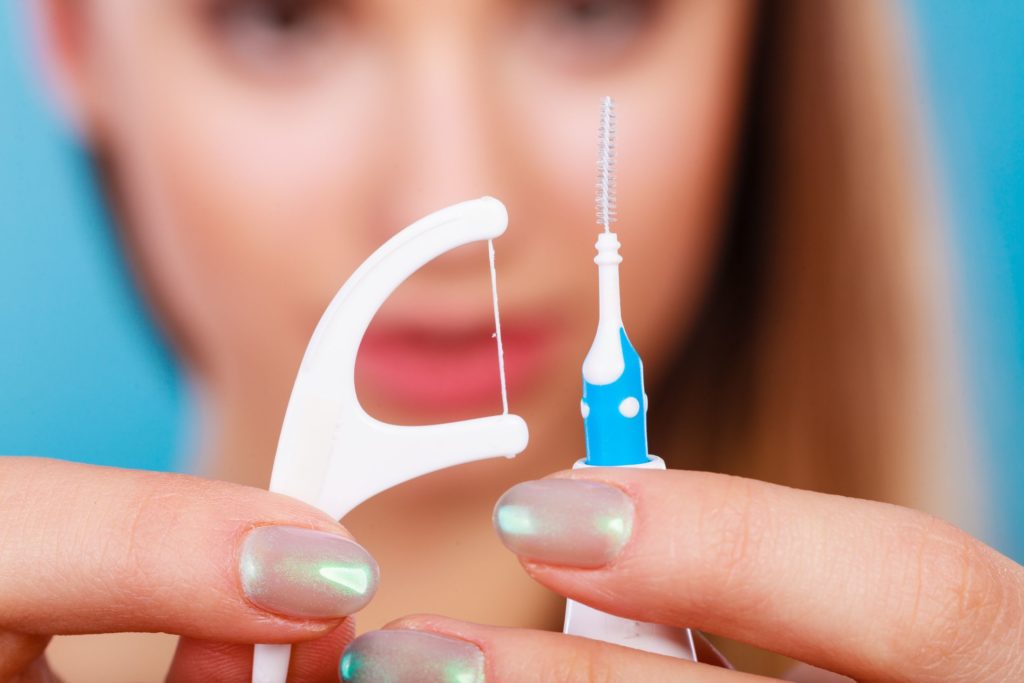Your braces and you: a good dental hygiene routine
If you’ve got braces, then you’ve got to maintain a good oral health routine. If you don’t, you run the risk of accelerated tooth decay and uneven staining. You’re going to want to ensure you’re happy with the results of your treatment at Damon Orthodontics, so let’s go over the extra steps you need to add to the beginning and end of your day.
What you eat
You know you have to avoid certain foods when you have braces. As annoying as this can be, it’s for a good reason. Sticky foods like gum and caramel get caught in the wires and brackets, and lead to hard-to-remove build-up. Avoiding these foods in the first place will cause you less headaches down the road.
You should still be wary of hard foods like nuts even though they don’t pose the same risk of gumming up your appliance. Chewing nuts or ice damages your braces. Avoid the hassle by cutting these kinds of foods out all together, or by eating them in softer, smaller forms.
You should watch your intake of highly acidic foods like soft drinks, citrus fruits, salsa, and vinegar, whether you’ve got braces or not. You don’t have to cut these out completely, but be aware that acid damages tooth enamel over time. So the less acid you subject your teeth to, the better.

Building a routine
Brushing your teeth thoroughly at least twice a day should be a priority, whether you have braces or not. Regular brushing leads to fresh breath, eliminates stubborn food particles, and keeps the mouth healthy.
Easy access
You should remove any elastic bands before you begin brushing. This allows for easier access, and you can give the rubber bands a once over while they’re out to make sure they’re staying clean.
Take a good look
Take a second to check your braces in the mirror. Examine every angle you can. You’re looking to make sure that there are no glaring issues and that everything’s looking right. Eventually this becomes second nature and you’ll have a quicker time spotting anything out of the ordinary. Stay on top of it because broken brackets and wires can cause slow-downs in your treatment.
Brush, brush, brush your teeth
Make sure to use a soft-bristled toothbrush and toothpaste with fluoride. Brush your teeth the way you normally would but pay extra attention to the areas behind your wires and around your brackets. Don’t be too rough, but make sure you get in all the nooks and crannies. Take a little extra time to get all over your braces in addition to the normal two minutes you should brush. Place the tips of the bristles so they’re flat against your teeth, and gently brush them using small circular motions. Move on to the areas between the gums and the braces, and tilt the brush towards the gum line while continuing the circular motions. Glide the bristles in a firm back-and-forth motion to clean the chewing surfaces of the upper and lower teeth. Thoroughly brush the inside surfaces of the teeth using those same small circular motions.
Flossing
It may seem difficult to maneuver dental floss around your appliance at first, but having braces doesn’t make flossing your teeth impossible. It’s very important to floss when you’ve got braces on because there are too many areas where food becomes trapped.
Make sure to use waxed dental floss because unwaxed floss can sometimes get caught on brackets and shred, leading to an annoying clean-up process. Snap off a thread of about 18 inches or so. Place the thread between the teeth–be careful around your wire–and gently move it up and down. Move slow to prevent snapping, discomfort, and bending of your wire. A floss threader helps make flossing with braces easier. It’s a tool a lot like a threading needle, simply pull one end of the floss through the threader and feed the threader under the archwire. Then grab the floss on each end and slide it up and down the sides of both teeth and under the gums. If you hear a squeaking sound it means it’s time to pull the threader out and move on to the next section of teeth.

A quick fix
You might find yourself with food particles caught in your braces between your morning and evening hygiene routines.It will be much more comfortable to dislodge them as soon as you can instead of harboring them throughout the afternoon. Having a waterpik is a handy way to get into those hard to reach places using a safe, high-pressure stream of water.
If you’ve got further questions about how to care for your braces, don’t hesitate to contact us at Damon Orthodontics. Open communication and patient understanding is the foundation for good healthcare. Visit our Sacramento location today!

 Dr. Szymanowski
Dr. Szymanowski